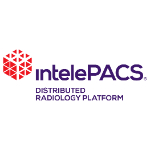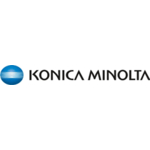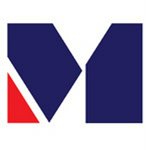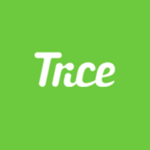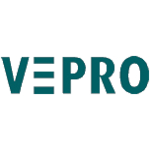List of Best PACS Software
Showing 10 of 14 productseHospital is a digital solution for all your healthcare needs. Designed to simplify and streamline the medical process, eHospital provides an all-in-one platform for patients and medical professionals to connect and manage their healthcare services...Read eHospital Reviews
IntelePACS is a leading software in the medical industry that simplifies the process of managing and storing medical images. Developed for healthcare professionals, IntelePACS streamlines workflows, increases efficiency, and enhances patient care. La...Read IntelePACS Reviews
Exa PACS is a software that is changing the game for medical imaging. With its robust technology and user-friendly interface, Exa PACS streamlines the process of managing and sharing medical images, making it an essential tool for healthcare professi...Read Exa PACS Reviews
Mipacs Storage is a storage solution that streamlines data management for businesses of all sizes. With its intuitive interface and robust features, Mipacs Storage offers a seamless is a way to store, access, and protect important data. Say goodbye t...Read Mipacs Storage Reviews
eRAD PACS Evolution is a revolution in medical imaging technology. This innovative software streamlines image management, simplifies workflow, and enhances collaboration between healthcare providers. Say goodbye to outdated systems and hello to a new...Read eRAD PACS Evolution Reviews
Studycast is a solution for seamless learning and progress tracking. With its user-friendly interface features, Studycast revolutionizes the way students and educators engage with online education. Say goodbye to the traditional classroom and embrace...Read Studycast Reviews
PaxeraUltima is the revolutionary imaging and diagnostic software that empowers healthcare professionals to provide accurate is a patient care. With its advanced features and user-friendly interface, PaxeraUltima elevates the standard of medical imag...Read PaxeraUltima Reviews
Tricefy is the innovative and game-changing software that is revolutionizing the way medical images are shared and communicated. With its user-friendly platform technology, Tricefy allows healthcare professionals to easily and securely share medical...Read Tricefy Reviews
VEPRO PACS is a state-of-the-art medical imaging solution that revolutionizes the way healthcare facilities manage and share patient images. With intuitive features security measures, VEPRO PACS streamlines the image storage and retrieval process, im...Read VEPRO PACS Reviews
ProtonPACS is a medical imaging and storage software designed to revolutionize the way healthcare professionals manage and access patient images. With its intuitive interface features, ProtonPACS streamlines the process of image management, allowing...Read ProtonPACS Reviews
- What Is PACS Software?
- Top Reasons Why Businesses Need PACS Software?
- What Are the Top Key Features of PACS Software?
- What Are the Top Benefits of PACS Software?
- What Are the Steps to Choose the Right PACS Software?
- What Are the Types of PACS Software for Different Industries?
- What Are the Technology Trends for Best PACS Software?
- What Are the Deployment Options for PACS Software?
What Is PACS Software?
PACS (Picture Archiving and Communication System) software is a specialized computer software system used for archiving, retrieval, and communication of medical imaging.
Picture archiving communication system allows secure electronic access to and storage of medical images such as X-rays, CAT scans, MRIs, and ultrasounds from centrally located secure servers. Radiologists and other medical caretakers can utilize this system to obtain patient images, which can be used to provide improved patient care and boost efficiency.
Furthermore, photos can be shared with other doctors, hospitals, and even countries. Picture archiving and communication system archiving feature enables for precise cataloging and retrieval of medical images. Radiologists and other medical professionals can then simply look for and share a patient's medical photos as needed.
Additionally, the communication portion serves as a secure means of sharing and receiving images between hospitals, private clinics, medical labs, and other medical facilities.
Overall, PACS software is a significant tool for doctors since it enables the safe and efficient storing, retrieval, and transmission of medical pictures. This increased practicality, combined with the greater convenience, assists medical practitioners in better diagnosing and treating patients.
Top Reasons Why Businesses Need PACS Software?
1. Improved efficiency and accuracy: PACS software facilitates the management, review, and interpretation of imaging data, allowing for speedier patient diagnosis and treatment.
2. More effective communication: The best PACS software integrates all stakeholders, including radiologists, doctors, and other clinicians, making collaboration easier.
3. Cost savings: Picture archiving communication system saves time and money by decreasing the need for physical storage and transit of medical pictures.
4. Remote diagnostics: The ability to deliver high-quality healthcare from any location with an internet connection.
5. Increased compliance: PACS software fulfills most medical data privacy standards and HIPAA regulations.
6. Scalability: PACS systems are built to manage massive amounts of data.
7. Comprehensive care: Cloud based PACS systems allows access to all medical pictures, regardless of origin.
8. Disaster recovery: PACS enables data backup and recovery in the event of a system breakdown.
9. Easier search options: A picture archiving communication system allows for picture searches based on patient data, which saves time and effort.
10. Quality control: PACS software may detect faults and mistakes automatically, and users can rapidly compare data to verify correctness.
11. Higher patient satisfaction: PACS promotes patient happiness by providing quick access to medical pictures.
12. Access to larger customer base: The best PACS software facilitates communication with clients in different locations.
13. Improved management: Picture archiving communication system aids in the efficient management of data, which eliminates time waste and enhances patient care.
14. Improved security: To protect patient medical records, PACS software employs encryption and other security features.
15. Reduced paperwork: PACS software allows imaging studies to be readily maintained electronically, minimizing paperwork.
What Are the Top Key Features of PACS Software?
The top key features of a PACS software system are:
1. Storage & Retrieval: PACS software systems enable safe storage, access, and retrieval of medical imaging data, enabling for efficient remote image exchange between doctors.
2. Workflow Management: The utilization of PACS software has the potential to optimize medical imaging operations, resulting in enhanced efficiency and productivity.
3. Reporting & Analytics: Political Action Committees (PACS) software facilitates the acceleration of reporting procedures through the utilization of interpretative software tools and analytical capabilities.
4. Communication: The PACS software facilitates efficient and secure communication among various parties.
5. Voice Recognition: The software tools developed by cloud based PACS systems provide seamless voice recognition and interpretation of imaging data, hence enhancing the precision of diagnostic procedures.
6. Quality Assurance: The utilization of the best PACS software enables the implementation and upkeep of quality assurance standards to ensure precise and reliable medical diagnosis.
7. Cost Reduction: The utilization of cloud based pacs systems facilitates cost reduction through the elimination of superfluous procedures and practices.
8. Mobile Support: The PACS program offers the functionality to retrieve, display, and generate visual representations through the utilization of mobile devices.
9. Image Enhancement: The software developed by PACS offers a range of technologies that effectively improve image quality, hence facilitating prompt and precise diagnostic procedures.
10. Security & HIPAA Compliance: PACS systems offer the requisite security mechanisms to ensure the confidentiality and integrity of medical imaging data, hence ensuring compliance with prevailing HIPAA rules.
What Are the Top Benefits of PACS Software?
1. Increased Accessibility: The utilization of PACS software facilitates the remote retrieval of medical pictures from any geographical location, hence enabling clinicians to promptly and precisely access their patients' information.
2. Cost Savings: The utilization of PACS software effectively mitigates the expenses linked to conventional methods of storing and transmitting photographs, such as hard-copy or film-based systems.
3. Improved Diagnostic Quality: The utilization of picture archiving and communication system offers medical practitioners access to high-resolution digital images, hence enhancing the precision of diagnostic procedures and treatment efficacy.
4. Time Savings: The utilization of cloud based pacs systems has obviated the necessity for physicians to manually review hard-copy medical images on an individual basis, hence enabling rapid and precise image processing.
5. Improved Security: The PACS program provides a safe means of storing and transferring medical images, offering the additional advantage of incorporating encryption and access control mechanisms.
6. Improved Archiving: Physicians possess the capability to conveniently save, retrieve, search, and process patient data within a unified software package.
7. EMR and PACS Integration: The best PACS software has been designed to facilitate seamless integration with extensive electronic medical record systems. This enables the utilization of a unified solution for the integration of patient data and images.
8. Streamlined Workflow: The implementation of Picture Archiving and Communication Systems (PACS) software enhances the overall efficiency of the medical imaging process by facilitating the seamless transfer and storage of pictures.
What Are the Steps to Choose the Right PACS Software?
1. Identify what features your organization needs: Prior to commencing the procedure of picking a Picture Archiving and Communication System (PACS) software solution, it is imperative to allocate sufficient time for the analysis and identification of the specific requirements of your firm. Enumerate the salient traits and advantages that hold utmost significance and are poised to yield the highest return on investment.
2. Make a Shortlist: Once the list of features and benefits has been prepared, the next step involves identifying and evaluating individual vendor solutions. Conduct an online search to obtain validation and proceed to compare the different options presented in the compiled list. Ensure that your selection of candidates is predicated upon the traits that hold the utmost significance to your organization.
3. Evaluate Vendors and Solutions: After reducing the number of potential vendors to a limited handful, it is advisable to thoroughly explore their websites and engage in demonstrations in order to gain a more comprehensive understanding of the solutions they provide. Engage in inquiry and conduct a comparative analysis of available options. It is imperative to maintain a comprehensive research log documenting the many features and benefits provided.
4. Review Credentials: Picture archiving and communication system is imperative to conduct comprehensive research on both the software and the items offered by the vendors. Examine customer evaluations, conduct thorough testing, and conduct a comprehensive investigation of the vendor's references. This will instill a sense of confidence in your decision-making process.
5. Ask About Support: Contact the customer service and support departments of the respective corporations. Inquire about their prior encounters with the platforms in question and assess their reactions. Additionally, picture archiving and communication system is advisable to inquire with each vendor regarding their respective upgrade plans.
6. Decide on an Agreement: After conducting thorough study and careful examination, one is prepared to proceed with the decision-making process. It is important to conduct a comparative analysis of prices and payment alternatives, as well as to gain a comprehensive understanding of the terms and circumstances associated with each agreement, in order to ensure that the chosen option aligns with one's specific requirements. Please affix your signature to the agreement subsequent to careful consideration of any recurring maintenance payments, as well as any supplementary services.
What Are the Types of PACS Software for Different Industries?
A wide range of PACS (Picture Archiving and Communication System) software options are currently accessible across several industries.
The primary categories of PACS software encompass DICOM (Digital Imaging and Communications in Medicine) and RIS (Radiology Information System) for medical imaging, PACS-E for enterprise imaging, PACS-ER (Physicians Archive Communications System – Enterprise Radiology) for enterprise radiology, and teleradiology solutions.
In the field of digital pathology, several notable platforms have been developed, including the Digital Slide Archive, ePathViewer, and TEPS, which specifically cater to the practice of telepathology. In the field of orthopedics, two notable software tools are ORTHOSeeker and ProVise.
In the field of cardiology, there are several software applications available, namely CARDIOSOFT, eECHO, and EKGWeb. Various businesses, including dental, ophthalmology, and veterinary care, utilize diverse types of the best PACS software.
What Are the Technology Trends for Best PACS Software?
The best in-demand technology trends for Pacs software are:
1. Cloud-Based Solutions: The popularity of cloud-based PACS software is increasing as a result of its scalability, cost-effectiveness, and flexibility. The cloud-based platform facilitates the accessibility of healthcare data and clinical process for numerous users.
2. Artificial Intelligence and Machine Learning: Artificial intelligence and machine learning technologies are currently being employed in the field of medical imaging diagnostics and radiology tools. This technology enables radiology experts to expedite their decision-making process and enhance the quality of their judgments through increased access to information.
3. Augmented Reality: Augmented Reality technology is facilitating enhanced visualization and analysis of three-dimensional (3D) pictures for medical practitioners. Additionally, it is being utilized for the purpose of delivering remote help in surgical procedures and clinic operations.
4. Blockchain Technology: The utilization of blockchain technology is enabling the enhancement of security, speed, and cost-efficiency in the preservation of healthcare records and data within the Picture Archiving and Communication System (PACS).
5. Mobile Devices: The utilization of mobile devices has become prevalent in the realm of healthcare, since they are employed for the purpose of accessing healthcare data, reviewing photographs, and facilitating telemedicine. This technology enables healthcare workers to efficiently and securely retrieve patient data from any location.
What Are the Deployment Options for PACS Software?
The available deployment options for PACs software encompass on-premises, hybrid, and cloud-based solutions. The implementation of on-premises involves the utilization of a tangible server that is equipped with the PACS software, which is located at the location where it is being used.
A hybrid deployment combines the benefits of on-premises and cloud deployments by utilizing a combination of on-premises and cloud-based PACS software.
In conclusion, a cloud solution deployment refers to the utilization of a hosted cloud service, wherein the entirety of the Picture Archiving and Communication System (PACS) software is hosted, updated, and managed remotely by the PACS provider.

